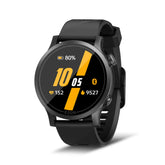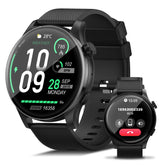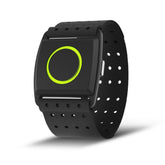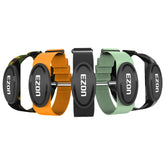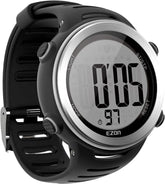Hiking 101: Essential Gear, Trail Tips, and Navigation Techniques
Embarking on a hiking adventure is a thrilling way to connect with nature, but proper preparation is key to a safe and enjoyable experience. Whether you’re tackling a short day hike or a multi-day trek, having the right hiking gear, knowing trail safety basics, and mastering navigation techniques can make all the difference. In this guide, we’ll cover everything a beginner needs to know, including the best hiking watch for tracking trails and staying safe in the great outdoors.
1. Essential Hiking Gear for All Terrains
A. Clothing: Dress in Layers for Any Weather
- Base Layer: Moisture-wicking merino wool or synthetic tops/bottoms to keep sweat away from your skin (avoid cotton, which retains moisture and chills you when wet).
- Mid Layer: Fleece or down jacket for insulation on cold days—pack a lightweight option even for summer hikes (temperatures can drop unexpectedly).
- Outer Layer: Waterproof, breathable shell (Gore-Tex or similar) to protect against rain and wind.
B. Footwear: Choose the Right Hiking Boots/Shoes
- Day Hikes (Easy Trails): Lightweight hiking shoes or trail runners (e.g., Salomon X Ultra) for agility and comfort.
- Rugged Terrain/Multi-Day Treks: Waterproof, high-top boots with ankle support and Vibram soles (e.g., Lowa Renegade) to prevent sprains and provide grip on slippery rocks.
C. The Best Hiking Watch for Navigation and Safety
A reliable hiking watch is a game-changer for tracking routes, monitoring elevation, and staying safe:
- GPS and Mapping: Preloaded topographic maps and multi-GNSS support (GPS, GLONASS, Galileo) to navigate without cell service.
- Battery Life: 20+ hours in GPS mode for multi-day hikes (e.g., EZON GPS Series offers up to 40 hours, perfect for extended treks).
- Durability: Shock-resistant casing and 10ATM water resistance to withstand harsh conditions.
- Additional Features: Altimeter, barometer (for weather forecasting), and emergency SOS functions (some models).
D. Backpack and Essentials
- Backpack Size: 20–30L for day hikes, 50–70L for multi-day trips—look for padded hip belts to distribute weight.
-
10 Hiking Essentials (The 10 Cs):
- Navigation: Map, compass, or best hiking watch
- Sun Protection: Hat, sunglasses, SPF 30+ sunscreen
- Insulation: Extra layers (see clothing section)
- Illumination: Headlamp with fresh batteries
- First Aid: Compact kit with bandages, antiseptic, pain relievers
- Fire: Waterproof matches/lighter
- Shelter: Lightweight emergency tent/space blanket (for multi-day hikes)
- Food: High-calorie snacks (nuts, energy bars)
- Water: 2L capacity + filter (e.g., Sawyer Squeeze)
- Knife/Multi-Tool: For cutting rope or preparing food
2. Trail Safety: Prepare for the Unexpected
A. Plan Your Hike in Advance
- Research Trails: Use apps like AllTrails or Gaia GPS to check difficulty, length, and recent user reviews.
- Share Your Itinerary: Tell a friend or park ranger your route and expected return time—carry a physical map as a backup to digital tools.
B. Monitor Weather and Trail Conditions
- Check Forecasts: Use your best hiking watch’ barometer to detect pressure drops (a sign of incoming storms).
- Avoid Hiking in Extreme Weather: Postpone hikes during thunderstorms or heavy snow—lightning and whiteouts pose serious risks.
C. Stay Hydrated and Fueled
- Hydration: Drink 0.5–1L of water per hour; add electrolytes (tablets/powder) for hikes over 2 hours to avoid cramps.
- Nutrition: Snack every 1–2 hours to maintain energy (e.g., trail mix, jerky, or energy gels for long treks).
D. Practice Leave No Trace Principles
- Pack Out All Waste: Carry a small trash bag for litter, including food scraps and microplastics.
- Stay on Marked Trails: Wandering off-trail damages ecosystems and increases the risk of getting lost.
3. Navigation Techniques for Beginners
A. Read a Map and Compass
- Map Orientation: Align the map with north using a compass—practice at home with local trails.
- Landmarks: Identify prominent features (rivers, peaks, roads) to cross-reference your position.
B. Use a GPS Device or Hiking Watch
- Waypoint Marking: Save key points (trailheads, water sources, campsites) on your best hiking watch for easy navigation back.
- Route Tracking: Record your hike to review distance, elevation gain, and pace later—great for improving future trips.
C. Follow Trail Markers
- Color-Coded Signs: Most trails use blazes (painted marks) or cairns (stacked stones) to indicate the path—pay close attention at intersections.
- GPS vs. Markers: Use both! Technology can fail, but physical markers are reliable in any conditions.
D. Emergency Navigation
- If Lost: Stop, stay calm, and retrace your steps to the last known landmark. Use your watch’s SOS feature or whistle (3 short blasts is the universal distress signal).
4. Hiking Tips for a Smooth Adventure
A. Pace Yourself
- Uphill: Short Strides: Conserve energy by taking smaller steps and using trekking poles for balance.
- Downhill: Control Speed: Lean slightly back to reduce knee pressure; use poles to absorb shock.
B. Foot Care
- Break In Shoes: Wear new boots for short walks before your hike to avoid blisters.
- Tape Problem Areas: Use athletic tape on prone spots (heels, toes) for extra protection.
C. Wildlife Safety
- Keep Distance: Maintain 100 feet from large animals (deer, bears) and never feed wildlife.
- Make Noise: Clap or talk loudly on wooded trails to avoid surprising animals like snakes or birds.
Gear Up with EZON for Your Next Hike
- Precision Navigation: Multi-satellite support and offline maps for remote trails.
- Durability: MIL-STD-810G shock resistance and 10ATM water resistance, perfect for rugged terrain.
- Long Battery Life: 40+ hours in GPS mode, so you never lose track of your route.
Pair this with quality hiking boots, layered clothing, and a well-stocked backpack, and you’ll be prepared for any trail challenge.
Ready to Hit the Trails?
Hiking is a rewarding activity that combines physical activity with the beauty of nature. By investing in the right hiking gear, prioritizing trail safety, and mastering navigation techniques, you’ll build confidence and enjoy safer, more enjoyable hikes.
Remember, every hike is a learning experience. Start with easy trails, gradually increase difficulty, and let your best hiking watch be your trusted companion. The great outdoors awaits—lace up, explore, and embrace the adventure!
